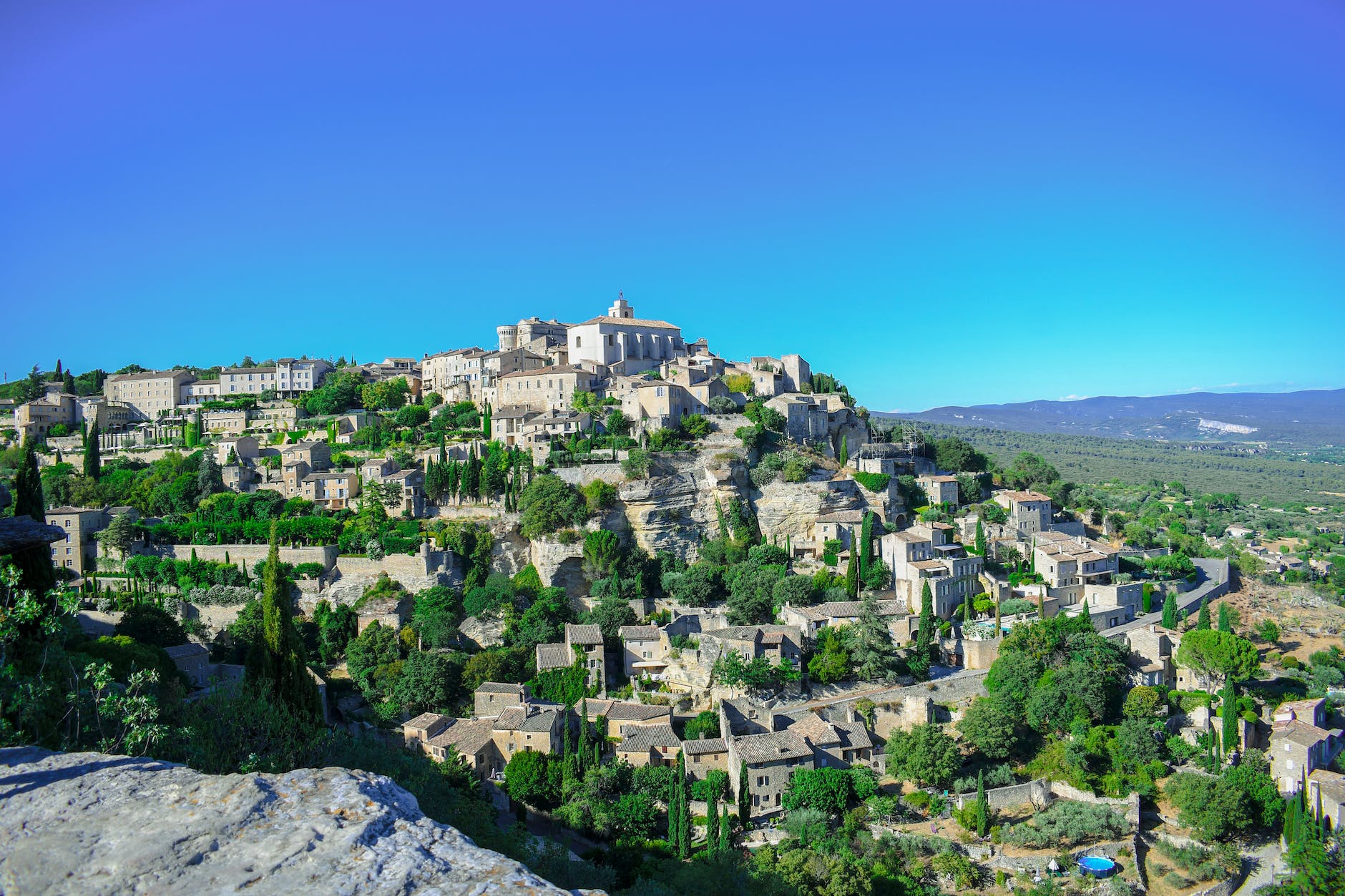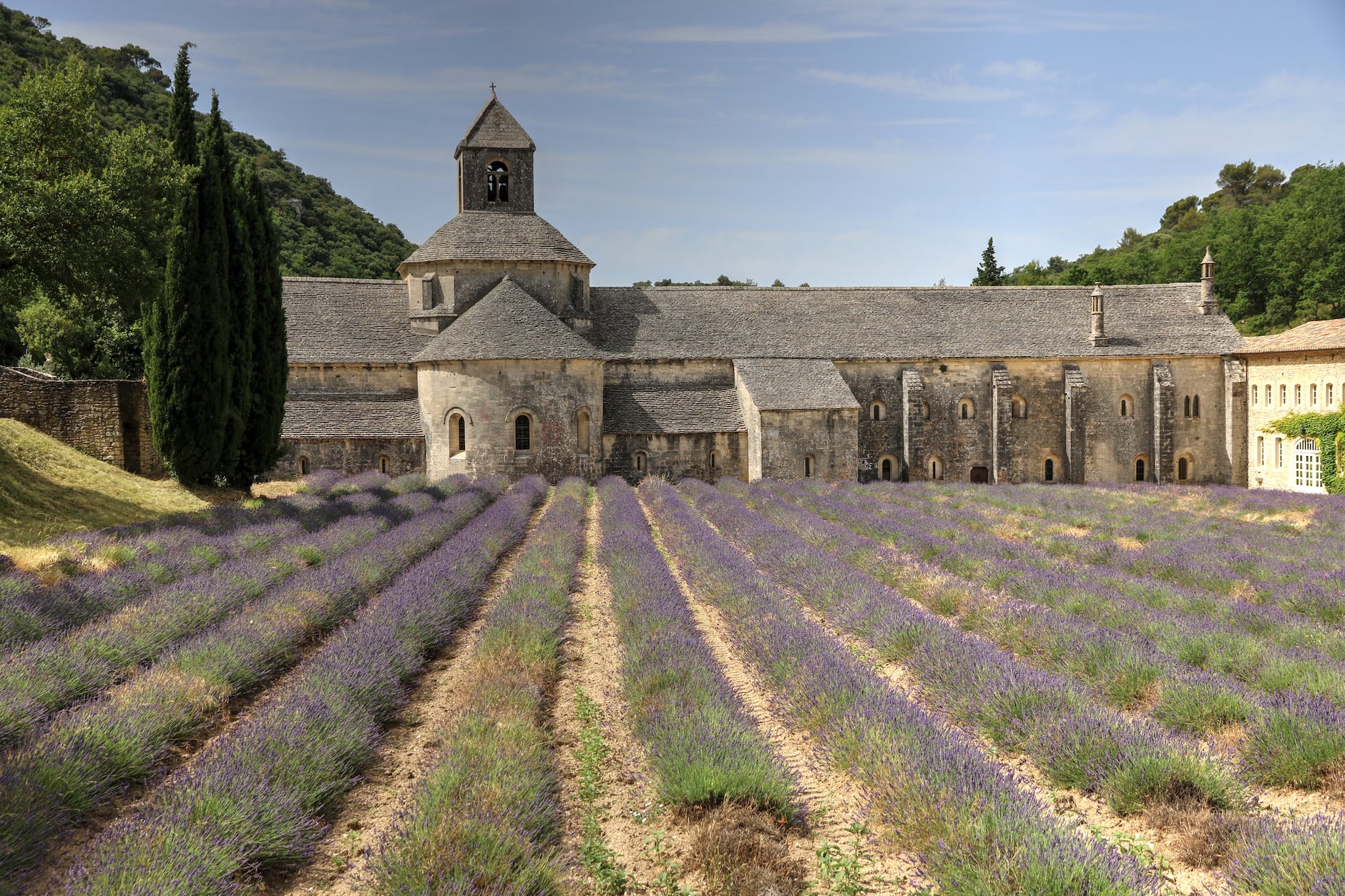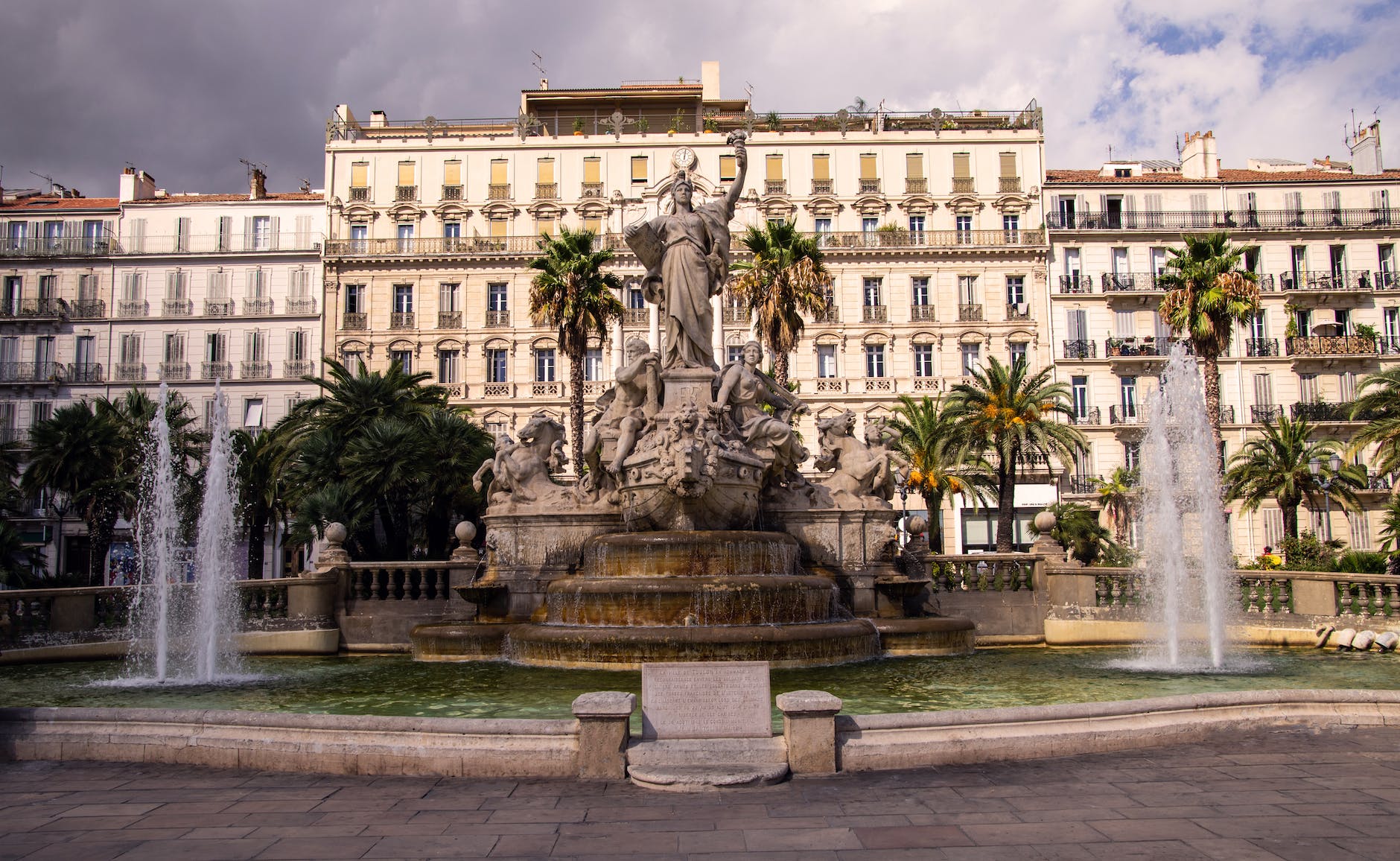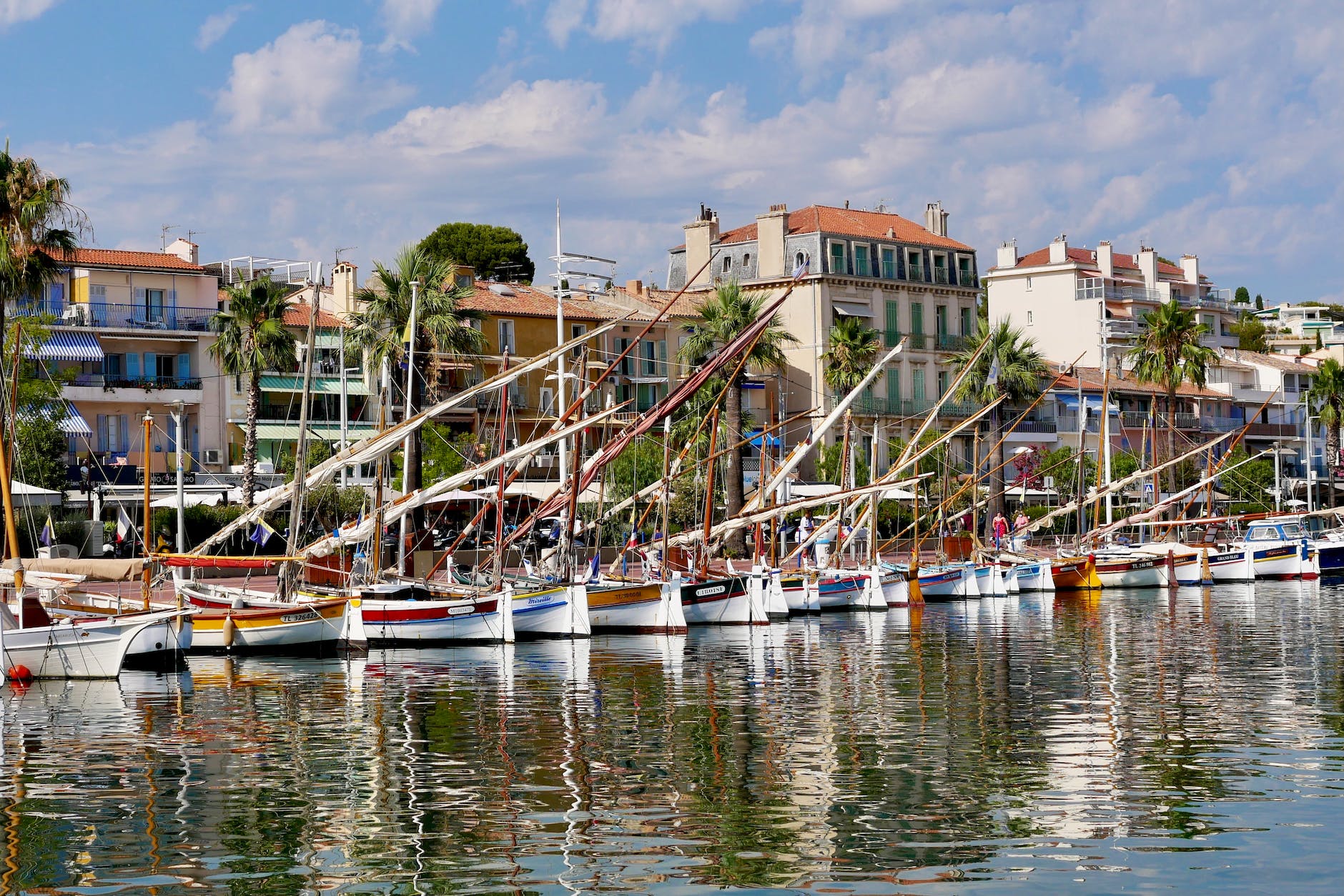
It’s here! Spring has arrived… and not a minute too soon. This past weekend was the first sunny one we’ve had in the last 3-4 weeks. And it wasn’t much better before that… Snow, we had snow this year. It snowed in our front yard and covered our house and yes, it was magical… but that also meant we’ve had a very cold winter this year and Provençal folks (and me too!) are over it. Bring on the sunshine, the apéros on the terrace, and early-morning trips to the beach. The season is getting started slowly, but les beaux jours (the beautiful days) are just around the corner.
And so are the spring and summer traveling months. I’ve been thinking about a few tips for holiday-goers and I hope you’ll find the following ideas helpful. And please feel free to add your own tips for Provence in the comments below.
1. Try to make a home base.
Everyone has their favorite way to travel, but I really like the idea of making a “home base” from which you can jump around to different cities / villages in the south. Aix-en-Provence is a great city for this, as is Isle-sur-la-Sorgue. I loved the “quieter” feel of Isle-sur-la-Sorgue when we stayed there, and then being able to visit larger cities like Avignon and other villages around the Vaucluse. Here’s a bit more about our extended weekend in Isle-sur-la-Sorgue.
2. Go off the beaten track, on your own.
So there are the real “must-sees” of Provence – Aix, Avignon, St. Rémy de Provence, Marseille, and the villages around the Luberon (to name but a few!) – but some of these places tend to get pretty crowded during the peak travel months (spring, summer, and early fall). Why not visit a lesser known Provençal village for all of the “wow” factor and more elbow room to move around? I had the pleasure of visiting the Coustellet market while taking a lovely cooking class last May and if it wasn’t the most charming, and “authentic”, of all Provençal markets around – full of locals and full of beautiful products. I’d never even heard of Coustellet, but would go back again and again. I spent the next day in Fontaine de Vaucluse, and, although very charming itself, was very busy. Spend some time visiting those lesser-known villages in your guidebook, they may surprise you.
3. Arrive early at the markets.
This is a biggie! Arriving early at the markets is really a must if you want to start your visit on the right foot. Just this past Wednesday, we went to the Sanary-sur-Mer market and arrived at about 9:30am (which is on the late-side for our usual trips). The parking lot was already almost full by the time we arrived. And when we left, at 10:45am, there was a line of cars waiting for a spot. This market is one of the best in the region, and if you get there early (9am is good) you can really appreciate the stalls, talk to the locals, and get in some good photo-ops. Since this trip was at the end of March, you can only imagine how crowded the markets can get in the summer! Here’s a list of “Markets of the Month” from the blog and also, How to Shop at a Provençal Market.

4. Be flexible on timing.
I’ve mentioned it here and there, but things in the south of France can take a longggg time. Sometimes that’s a good thing, like when you’ve planned to spend your whole afternoon over a lazy Sunday lunch at your favorite restaurant. But other times, when you’re sightseeing, you may just want lunch to be over so you can move on to your next destination. Well, that may or may not happen. “Rushed” is really not a thing here, and it’s good to keep that in mind when planning out your days.
5. Be flexible with your ideas of service.
Well, it would be great if every person who served us was kind, helpful, and smiling, but *alas* that’s not always the case. I won’t say that I’ve had a lot of “bad” service in Provence, but unfortunately, when you have had it, it sticks in your mind. Just know that the majority of customer service here is good, but it’s not necessarily the same kind of service as Americans (can’t speak for the rest, but I’d imagine it’s the same!) are used to – ie. a waiter won’t be running to your table ever few minutes to check on you (in most cases) and someone serving you your café latte may not be overly concerned with the kind of day you’re having. Not necessarily bad or good, just culturally different.
6. Pay the extra euros for the TGV train.
Train travel can be wonderful in France, and it’s my preferred way of traveling around the country. From trial and error, I prefer to spend a couple extra euros and take a TGV, high-speed, train around the south of France. The TGV train usually has few stops between destinations and will get you from point A to point B in the quickest time possible. For example, a TGV train from Marseille to Nice will probably have one or two stops in between destinations, while an intercity train will stop at practically every town along the way – 10 stops or more. This also increases your chances for delays… Although paying less for an intercity train might look attractive, a TGV train is a better bet for arriving at your destination on time and with less hassle.
7. Pack a picnic lunch for long drives.
French rest stops are very well-organized and plentiful. Their food choices are often a little less desirable and tend to be high-priced. You might get lucky and find a restaurant chain at your stop, but you’re more likely to find hamburgers and packaged sandwiches. Also, the lines to grab lunch are always packed! I like to think it’s because the French have so much vacation time, but no matter when we go, the rest stops always seem to be full. So we’ve started doing what many French families do, pack a picnic lunch. You can put together your own sandwich with a nice baguette and some salami and cheese picked up from the local market. Why not add in some Provençal olives and fresh fruits? You’ll pay half the price, dine “al fresco”, and save yourself a lot of time.

8. Be careful in the summer sun.
We all know that the south of France is known for its great weather, but just take care in the sun during the peak summer months. It gets hot, really hot, and you shouldn’t plan to do any strenuous activity, and it’s very important to stay hydrated. Also, check that there will be air conditioning in your hotel and during any kind of traveling about.
9. Brush up on your French.
It’s always nice to speak a bit of the local language, and French people really appreciate it when you do. It also makes for quite an interesting experience when you’re able to exchange with the people you meet along the way. Of course, most people in hotels, restaurants, and tourist sites will speak basic English, but don’t be afraid to try out your French, no matter what your level. (I wrote a bit more about this in the post, How to Use French while Traveling).
10. Stop at the local tourist office.
I never was a “tourist office” kind of person until I moved to France. Having stopped in more than a few – namely our former home city of Toulon, Aix-en-Provence, Hyères, Carpentras, and Fontaine de Vaucluse – I can attest that French tourist offices are fantastic. Some are even privately owned and are run like the best concierge you would find in a top-level hotel. They organize transport, give walking tours, help with hotel and restaurant recommendations, and give up-to-date advice about “what’s on” in the region.

11. Head to the coast.
Well, if the countryside of Provence isn’t just incredibly beautiful: sun-washed towns like Aix and St. Rémy de Provence, gorgeous hilltop villages like Gordes & Lourmarin, and what about all those rolling vineyards? Fabulous! But don’t forget about the equally amazing port-side towns like Cassis, Bandol, and Sanary-sur-Mer. There’s nothing better than enjoying a summer apéro in a beachside café or a day spent dipping your toes in the Mediterranean… just about as relaxing as it gets.
12. Learn basic phrases on French menus.
With some exceptions, most good French restaurants don’t have their menus translated into English. Of course, sometimes you are stuck for choice and that seaside café on the port of Cassis is your only option for a nice aperitif. That’s totally understandable. But if you want authentic French meals, those meals that you might remember a lifetime, try the restaurant that has their entire menu in French. Learning a bit about French food terms before you go could make a world of difference in your food choices during your trip. (More about French terms here: How to Order in a French Restaurant).
And… Realize that you can’t see it all in one trip!
Well, Provence is indeed a big and beautiful place, and it would be very difficult (and probably not that much fun!) to try and see it all in one go. There are a lot of places I’ve yet to visit, and that is part of the appeal of the region. There’s so much to love here, it’s a great excuse to keep coming back year after year.
I hope these tips have been helpful. There are many (many!) more pieces of advice to share for the region. Please feel free to add your own travel tips for Provence in the comments below.
Happy planning and bon voyage!





